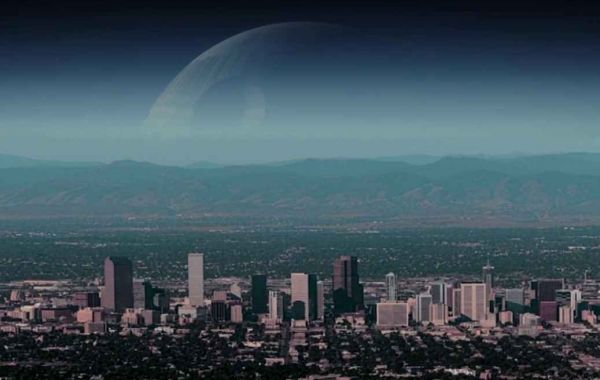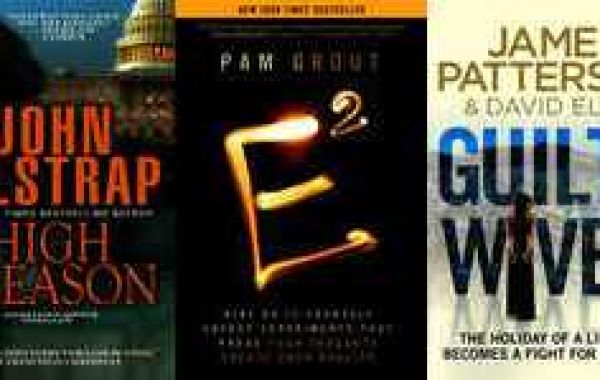Chapter 2: The Signs of the Times
One might ask, “If prophecy is so difficult to correctly interpret, why should we bother with it?” In response, I would say that from among the myriad of reasons to do so, I would like to point out two. The first is that God gives us prophecy for a reason. By conservative estimates, roughly one-third of the verses of the Bible are prophetic in nature. If one-third of everything God is telling us is prophecy, then He must think prophecy is very important! That alone is reason enough to study and learn from it. But the second reason is what Y’shua says about it.
In the Gospel of Matthew, chapter 16, some Pharisees and Sadducees come to test Y’shua. They don’t really believe He is the Messiah, so they are asking Him to show them a sign to prove that He is. But because they are strict adherents of scripture, they should know the prophecies of the Messiah well enough to recognize Him when He arrives. Knowing this makes Y’shua’s response more understandable. The exchange is described in verses 1-4:
Then the Pharisees and Sadducees came, and testing Him asked that He would show them a sign from heaven. 2 He answered and said to them, “When it is evening you say, ‘It will be fair weather, for the sky is red’; 3 and in the morning, ‘It will be foul weather today, for the sky is red and threatening.’ Hypocrites! You know how to discern the face of the sky, but you cannot discern the signs of the times. 4 A wicked and adulterous generation seeks after a sign, and no sign shall be given to it except the sign of the prophet Jonah.” And He left them and departed.
If they had just studied the prophecies of the Messiah, they would have known what signs to look for. They would then have known that Y’shua was the Messiah, and they would not have had to ask for a sign from Him. By extrapolation, we can see here that Y’shua considers those who do not know their prophecy to be “wicked and adulterous.” That to me is a compelling reason to be familiar with prophecy and to learn the “signs of the times!”
But some might say that is harsh, calling people “wicked and adulterous” for just not studying predictions of the future. Once again, prophecy is much more than just future predictions. Think about it this way, when two people meet and want to get to know each other better, what do they discuss? They talk about who they are, where they live, what they do, what their hopes and dreams are, what their future plans are, etc. Prophecy is God telling God’s people—the bride of Christ—who He is, where He lives, what He does, His hopes and desires, and His future plans. Prophecy isn’t about predicting the future—although that is part of it—prophecy is about getting to know the Lord, our bridegroom. God’s people, betrothed to the Lord, refusing to listen to Him as He reveals Himself to us, are like a bride who so refuses to get to know her husband that she doesn’t even recognize him when he is right in front of her, and so she goes out seeking after other men. This is why Y’shua rightly calls those who don’t learn prophecy “wicked and adulterous.” Prophecy is not about knowing the future; it is about knowing the Lord.
That being said, knowing a person’s goals and plans for the future is a large part of knowing the person. And that is what studying end times prophecy is all about: knowing God by knowing God’s goals and plans for the future. So this book is not a comprehensive look at all prophecy, but rather is an attempt to get to know a little more about God by learning some of His future plans.
Signs of the Times: The Olivet Discourse
During the week before the crucifixion, Y’shua and His disciples were sitting on the Mount of Olives. They asked Him specifically about the end times. Y’shua’s response is a hallmark of end times prophecy, and is known as the Olivet Discourse. The Olivet Discourse is covered in three gospels, Matthew chapter twenty-four, Mark chapter thirteen, and Luke chapter twenty-one. While minor details can be gleaned from Mark’s and Luke’s accounts, Matthew’s gospel covers this discourse the most thoroughly. So let us look at what Matthew has to say.
Now as He sat on the Mount of Olives, the disciples came to Him privately, saying, “Tell us, when will these things be? And what will be the sign of Your coming, and of the end of the age?”
The disciples ask this of Y’shua. Knowing the Old Testament, the disciples would be familiar with certain accounts such as Ezekiel, chapters thirty-eight and thirty-nine, which predict very specific wars that are to come at the end times. So Y’shua starts His response by advising them not to panic every time they hear about a war. There will be many wars, and they will increase before the end. But these are not the apocalyptic wars predicted to take place at the end. He says it this way:
And Jesus answered and said to them: “Take heed that no one deceives you. For many will come in My name, saying, ‘I am the Christ,’ and will deceive many. And you will hear of wars and rumors of wars. See that you are not troubled; for all these things must come to pass, but the end is not yet. For nation will rise against nation, and kingdom against kingdom. And there will be famines, pestilences, and earthquakes in various places. All these are the beginning of sorrows.”
Some translations say “…the beginning of birth pains” rather than “…the beginning of sorrows.” The word is from an Ancient Greek word pronounced O-Deen’ which means the pain of childbirth, birth pangs. When a woman is pregnant, she starts having Braxton-Hicks contractions during her second trimester. But they are few and far between. As the delivery approaches, the contractions become more intense, more frequent, and more regular. The idea here is that as the end approaches, the signs of the times will become more intense, more frequent, and more regular. At present, since the end of the Cold War, there seem to be many more, smaller wars around the world. There has been a rise in allergies and diseases, like AIDS, cancer, Ebola, etc. And according to a study published online in the journal Geophysical Research Letters, there were more than twice as many big earthquakes in the first quarter of 2014 as compared with the average since 1979. “We have recently experienced a period that has had one of the highest rates of great earthquakes ever recorded,” said lead study author Tom Parsons, a research geophysicist with the U.S. Geological Survey (USGS) in Menlo Park, California. As this process of end times signs intensifying continues, Y’shua tells us what it will look like:
“Then they will deliver you up to tribulation and kill you, and you will be hated by all nations for My name’s sake. And then many will be offended, will betray one another, and will hate one another. Then many false prophets will rise up and deceive many. And because lawlessness will abound, the love of many will grow cold. But he who endures to the end shall be saved. And this gospel of the kingdom will be preached in all the world as a witness to all the nations, and then the end will come.”
Keeping in mind that the disciples were Jewish, this could be referring to anti-Semitism, and Nazi Germany. But the common interpretation is that this refers to a worldwide persecution of both Jews and Christians. As far as the false prophets and those claiming to be Christ, we have had plenty of them. From Jim Jones to David Koresh to Apollo Quiboloy to A.J. Miller, and so on ad nauseum, as of this writing, Wikipedia.com has a list of 35 individuals who have claimed to be the return of Christ. Many of the signs of the times are already in place. Y’shua continues, telling what comes next.
“Therefore when you see the ‘abomination of desolation,’ spoken of by Daniel the prophet, standing in the holy place” (whoever reads, let him understand), “then let those who are in Judea flee to the mountains. Let him who is on the housetop not go down to take anything out of his house. And let him who is in the field not go back to get his clothes.
The “abomination of desolation” is something that Daniel predicts. He tells of a seven year Tribulation. Three and a half years into the Tribulation, halfway through, a person known as the antichrist goes into the temple in Jerusalem, puts a stop to the daily sacrifice, and declares himself to be god. Y’shua is saying when this happens, the Jews and Christians living in what we now call the West Bank need to flee for their lives, not stopping to get any valuables, food, clothing, or anything. This event begins what is known as the Great Tribulation, and is the second half of the Tribulation.
The discourse continues, but it is more about what to expect during the Tribulation, and instructions regarding what to do and what not to do than about the signs of the times. So at this point, we will turn to Daniel, and see what he has to say about the signs of the times. First, let us look at Daniel, chapter 9.
Daniel 9 – the Seventy Weeks
In this chapter, Daniel is told about seventy weeks of years. That is, seventy sets of seven years each. The last week is set apart from the other sixty-nine. The first sixty-nine weeks begin when Cyrus, king of Persia, orders that the city of Jerusalem be rebuilt. Cyrus gave that order in 519 B.C. The sixty-nine weeks ends when Messiah appears on the scene. But sixty-nine times seven is four hundred eighty-three, meaning Messiah would appear in 36 B.C. Y’shua came significantly after that, so there seems to be a discrepancy. It turns out that in Daniel’s time, Babylon and Persia were using a solar calendar that had a 360 day year as opposed to the 365 ¼ day year on the calendar that we use today. When accounting for this discrepancy, the prediction in Daniel says the Messiah will appear on the scene in 27 A.D., about the year that Y’shua began His ministry. And yet the Pharisees and Sadducees didn’t see the connection.
The prophecy goes on to say that after the sixty-ninth week, the Messiah will be cut off. And yet the Chief Priests, scribes and elders mocked Y’shua for being cut off at the crucifixion, just as King David predicted they would.
Then, the prophecy talks about the seventieth week, which is set apart from the others. This seventieth week is the period described earlier as the seven year Tribulation. Here is the prophecy from Daniel 9:20-27.
20Now while I was speaking, praying, and confessing my sin and the sin of my people Israel, and presenting my supplication before the Lord my God for the holy mountain of my God, 21yes, while I was speaking in prayer, the man Gabriel, whom I had seen in the vision at the beginning, being caused to fly swiftly, reached me about the time of the evening offering. 22And he informed me, and talked with me, and said, “O Daniel, I have now come forth to give you skill to understand. 23At the beginning of your supplications the command went out, and I have come to tell you, for you are greatly beloved; therefore consider the matter, and understand the vision:
24“Seventy weeks are determined
For your people and for your holy city,
To finish the transgression,
To make an end of sins,
To make reconciliation for iniquity,
To bring in everlasting righteousness,
To seal up vision and prophecy,
And to anoint the Most Holy.
25“Know therefore and understand,
That from the going forth of the command
To restore and build Jerusalem
Until Messiah the Prince,
There shall be seven weeks and sixty-two weeks;
The street shall be built again, and the wall,
Even in troublesome times.
The book of Nehemiah recounts Cyrus giving the order, and the city being rebuilt in troublesome times. Enemies of the Israelites tried everything from threatening to attack them, to lying to the king and saying that they were planning rebellion. But because Nehemiah, the head of the rebuilding project, had been one of the king’s close advisors, those causing trouble couldn’t get any traction.
As stated above, Y’shua’s ministry began around the year of the end of the “seven weeks and sixty-two weeks.” Also, it would seem that the first seven weeks are mentioned separately because that is how long it took to rebuild Jerusalem.
26“And after the sixty-two weeks
Messiah shall be cut off, but not for Himself;
And the people of the prince who is to come
Shall destroy the city and the sanctuary.
The end of it shall be with a flood,
And till the end of the war desolations are determined.
So, the Bible says, Y’shua died for our sins, not His. He was “cut off, but not for Himself.”
Next, “the prince who is to come” could represent a few different things. The phrase could refer to the Roman emperor in power when Jerusalem and the temple were destroyed in 70 A.D., or it could be referring to a future destruction, meaning the prince who is to come is the antichrist. Or it could be a dual prophecy and be referring to both of them. One final, but unlikely, alternative is that the Bible hints at certain demons having governing authority over certain areas of the world. The most prominent such hint is in Daniel 10:13, where a spirit who comes to Daniel in a vision tells him, “the prince of the kingdom of Persia withstood me twenty-one days; and behold, Michael, one of the chief princes , came to help me.” Here, both a demon (the prince of Persia) and an angel (Michael, the Archangel) are referred to as princes. So the prophecy, in saying, “the people of the prince who is to come” could be talking about people who do not follow God; they follow a demon.
I say this alternative is unlikely for one glaring reason. Demons exist from shortly after creation onward. They do not get born, live, and then die as we do. So by referring to a prince who “is to come,” this verse would seem to most likely be referring to a human who has not been born at the time the prophecy was given. I only present this alternative as a demonstration of how difficult prophecy can be to interpret—there are so many possible alternatives, choosing the correct one can sometimes seem overwhelming. Using specific details and a general overarching knowledge of the Bible can help to weed out the less likely alternatives. But the verse that follows would seem to indicate verse 26 is really talking about the antichrist.
27Then he shall confirm a covenant with many for one week;
But in the middle of the week
He shall bring an end to sacrifice and offering.
And on the wing of abominations shall be one who makes desolate,
Even until the consummation, which is determined,
Is poured out on the desolate.”
In this verse, “He” is referring to the antichrist. From other prophecies throughout the Bible, we can determine that the “covenant” is a seven year peace treaty with Israel, and that the signing of this treaty begins the Tribulation. The rest of this verse says that three and a half years into the Tribulation comes “the ‘abomination of desolation,’ spoken of by Daniel the prophet, standing in the holy place.” (Matthew 24:15).
Later in Daniel comes chapter 11. In this chapter, Daniel is having another vision in which he is being told about a series of wars between a northern kingdom and a southern kingdom. Not immediately obvious to the casual reader is what these wars entail. The northern kingdom is primarily Europe and the northern portion of the Middle East, and the southern kingdom is northern Africa, primarily Egypt. These wars cover thousands of years, going back to Ancient Rome, and culminating in the tribulation. The northern kingdom is actually different empires and nations that have all existed in the same basic location. The terminology comes from Alexander the Great’s empire. When Alexander died, his empire was split up into four kingdoms: The kingdom to the north (as described above), the kingdom to the south (also described above), the kingdom to the east (mostly India and the vicinity), and the central kingdom, sometimes called the kingdom to the west (everything in between). The final wars give us clues as to what the antichrist will be doing. Interestingly, while fighting against the kingdom of the south, ships from the west come to stop him. So instead of returning to the north, he turns toward Israel and verse 31 tells us, “And forces shall be mustered by him, and they shall defile the sanctuary fortress; then they shall take away the daily sacrifices, and place there the abomination of desolation.” We know at this point that this is talking about the same thing as the end of the prophecy in chapter nine, because they are both referring to the abomination of desolation.
These prophecies, like most of the end times prophecies in Daniel tell about what is happening during the Tribulation. There are other minor prophets in the Bible that also tell of the signs of the times both before and during the Tribulation. They speak of such things as the moon turning to blood and the sun not shining, and of other events as well. But one of the most interesting signs of the times comes near the end of the book of Daniel, and is given almost as if it were an afterthought.
Daniel is told in Daniel 12:4, “But you, Daniel, shut up the words, and seal the book until the time of the end; many shall run to and fro, and knowledge shall increase.” Technology has been fairly constant throughout most of history…until the twentieth century. Through the twentieth century, and into the twenty-first, we have seen amazing advances in technology that have allowed us to make amazing advances in the sciences. Knowledge has been increasing like at no other time in history. We have learned how to manipulate the atom for producing power, and for creating a single bomb that will take out an entire city. We have learned how to splice genes to do genetic engineering, and gene therapy that can eradicate certain diseases. We have set men on the moon. We fly in airplanes that allow us to go anywhere in the world in a day or less. Two centuries ago, it could take six months to get a letter from the east coast of the U.S. to the west coast. Now we can e-mail it and have it there in just a few seconds. Two centuries ago, they were using basically the same technology to deliver such messages that was being used over two thousand years ago. That technology had remained constant for nearly all of history. Then came the pony express. Then the telegraph, then the locomotive, then the automobile, the telephone, the computer, the internet. Following the pony express, each one of these was a major advancement in message delivering technology. Virtually no advancements in over two thousand years, then suddenly six or more major advancements in fewer than two hundred years! Knowledge is increasing, and world travelers are running to and fro like never before.
The signs of the times are all around us. People have been saying for years now that the end is near. I say we are right on the precipice, and the end is here.
Chapter 3: https://usa.life/read-blog/3616








